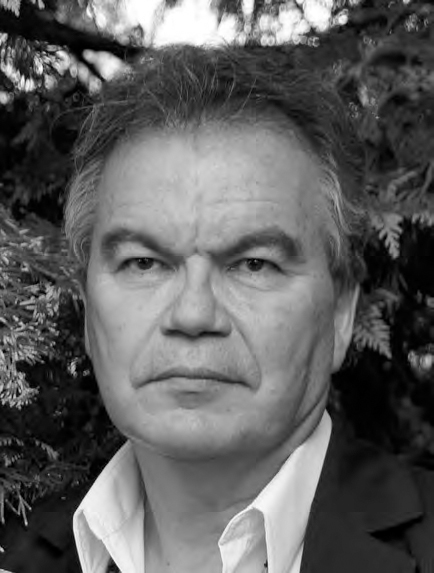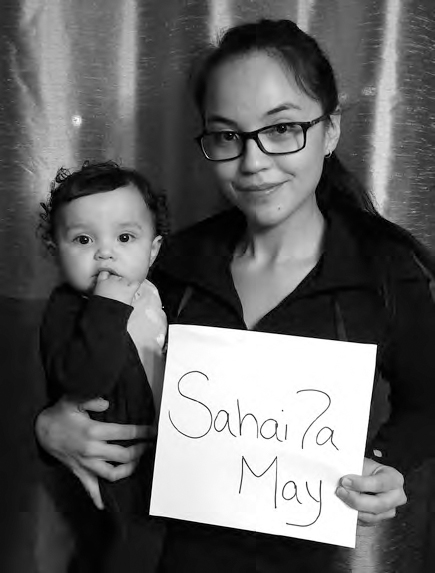by ‘Cúagilákv/Jess Housty
My name is ‘Cúagilákv1, and I am also called Jess Housty. I come from the Heiltsuk Nation, whose homeland stretches from the mainland of B.C.’s central coast out into the open ocean. This is who I am, and in our tradition, the story of the storyteller comes before the storyteller’s story. Although the story I am about to tell may be difficult to read, be patient. It’s an important one—and one that we share.
◆ ◆ ◆
Before the country of Canada appeared, there was Indian Country. Indigenous peoples spanned this continent: tribal territories, traplines and moccasin trails were written across the landscape. The stories of our peoples situated us in our respective geographies with a sense of identity that was intimately tied to the places we came from—our homelands. After first Settler contact, a different story began to unfold.
What became the story of Canada is fundamentally a story of injustice—a story controlled, first and foremost, by Settler culture. For generations, Indigenous people and Settler Canadians have been like characters in one another’s stories, but they haven’t done the hard work of building a common story. Instead, the Canadian narrative has typically been one of Indigenous erasure while the Indigenous narrative has been largely one of resistance and survival.
My grandparents’ generation still tells stories about the Indian Agents who policed their movements on- and off-reserve. My parents’ generation still tells stories of the Potlatch Ban, which made the practice of Indigenous ceremony illegal. Perhaps the most devastating story is the story of the residential school era, which is remembered by a dark slogan: “Kill the Indian in the child.” It took the form of an assault on the bodies and identities of Indigenous children, beginning with the act of beating the children for speaking their mother tongues. These stories remind us of all we have withstood as Indigenous people and remind us of our resilience.
The survivors of this painful history have been generous with their stories. Even though they are heavy ones, we have a responsibility to hear them and acknowledge them. We are aided by processes such as the Truth and Reconciliation Commission (TRC), which in June 2015 concluded a seven-year process that included hearing the stories of survivors. Processes such as the TRC have just begun translating these stories into recommendations that represent a way forward, not just for Indigenous peoples but also for the Settlers with whom we now share this land.
The story of my generation could be called a story of hope. I am only 29 years old, and mine is the first generation in my family in which no child was forcibly taken away. Thus we are reminded, Indigenous and Settler Canadians alike, that the stories of the painful past are not actually so far in the past. And as we explore the institutions, laws and policies that made room for these historical atrocities, we begin to understand that those same mechanisms, largely unchanged, still exist today. The story of hope lies in changes to those institutions, laws and policies.
After all, telling stories is one thing. Extracting and applying their teachings is another. As the question was aptly posed by many after the TRC’s conclusion, we’ve heard the truth. Are we ready to work for the reconciliation?
◆ ◆ ◆

On April 23, 2015, Nisga’a Ph.D. candidate Patrick Stewart defended his dissertation at the University of British Columbia. What sets him apart from other Indigenous graduate students? His 52,438-word dissertation, titled “Indigenous Architecture through Indigenous Knowledge,” eschews most punctuation, upper-case letters and even standard paragraphs. Stewart is quoted in the National Post describing his work as “a form of grammatical resistance.”
The dissertation issues an important challenge to the customary language of academia. Its expression mimics the oral quality of many Indigenous tongues, and in his insistence that this form should be validated, Stewart has done important work to help shift institutional paradigms. The examining committee unanimously accepted his dissertation.
First Settler contact, and everything that followed, has radically changed the way we (as Indigenous peoples in Canada) speak and think. Conventions of Western culture and language are very different from the ways of knowing and speaking inherent to the hundreds of unique Indigenous cultures and languages across Canada. Having grown up with English as my first language, I’ll never be able to think in Heiltsuk the way my grandmother does, or even to think in a mixed tongue the way my mother does.
And so a dissertation can become an act of radical resistance. As Indigenous citizens, we are advancing ourselves not by assimilating but by challenging institutions to adapt to our ways of knowing, thinking and speaking. Our ways of storykeeping and storytelling.
The challenges posed individually by people such as Stewart and collectively by processes such as the TRC deeply reinforce the need for change, and institutions are beginning to take notice. Following the TRC report, Universities Canada—an umbrella group representing 97 universities across Canada—announced a plan that includes substantively rewriting curricula, increasing Indigenous staffing at all levels and creating space for meaningful dialogue—all with the aim of making academia an agent of reconciliation.
Once upon a time, as some storytellers say, aspiring Indigenous academics such as Stewart had to confront government policies that stripped them of membership in their Nations before they were eligible to participate in institutions such as academia. Today, these tribal scholars are agitating for important change within those institutions, and the institutions are beginning to respond.
◆ ◆ ◆
This work is still nascent, however, and though academia may be leading the way, colonial institutions still have many miles to walk before our trails will run parallel.

On February 15, 2014, Shene Catholique-Valpy, a Chipewyan woman in the Northwest Territories, gave birth to a baby girl. She named her SahaiɁa2, a Chipewyan word that means “when the sun just peeks through.” But when Catholique-Valpy tried to register her daughter with the government’s vital statistics department, she was informed that the glottal stop in her baby’s name is not part of the Roman alphabet; therefore, her baby could not be registered. Though Chipewyan is one of 11 official languages in the N.W.T., Catholique-Valpy was forced to alter the spelling of her child’s name so the child could qualify for documents such as a territorial ID and health card.
SahaiɁa and her mother are not alone in this situation, and Indigenous language advocates assert that provincial and territorial governments have a responsibility to recognize and accept Indigenous peoples on their own terms—and by their own names. Catholique-Valpy continues to insist on and advocate for institutional change, with the hope that her daughter will someday be registered with the correct Chipewyan spelling of her name.
As Indigenous languages across the country struggle to survive—the languages of our original stories—it is critical that we protect them and nurture them toward resurgence. Languages shape our thoughts and practices. That Indigenous languages were explicitly targeted by the residential schools is a testament to their power as the foundation of our Indigenous identities and worldviews. Indigenous change-makers such as Patrick Stewart, with their “acts of grammatical resistance,” use language and storytelling as tools to leverage long-overdue institutional shifts. And the mothers of the next generation, by positing the idea that our Indigenous languages have a critical place in the dialogue, remind us that reconciliation can and must be multilingual.
◆ ◆ ◆
As these examples remind us, we all have a deep responsibility to sit with the stories of this country. The truth of those stories is the only fertile ground for a new, emerging narrative of Indigenous-Settler relations in Canada. And the reconciliation comes when that narrative inspires us to action. We all have a role as storytellers and a responsibility to make space for one another’s stories. When the telling of stories, the language of stories and the culture of stories become a part of our common practice, we enter a dynamic space in which, I believe, hope is present and transformation is imminent. The story we are creating together, Indigenous and Settler people alike, is critical to the future of this country. We have a lot at stake—our whole identities, individual and collective—in the telling. Why? Because, in the words of Cherokee scholar Thomas King, at the heart of it all, “the truth about stories is that’s all we are.”
‘Cúagilákv/Jess Housty is a poet, politician and community organizer from the Heiltsuk Nation, on the outer coast of British Columbia. Her work focuses on Indigenous sovereignty, storytelling, and social and environmental justice.
1 Pronounced “Jew-WA-GEE-lauk.”
2 Pronounced “Sah-HYE-uh.”
Reprinted from Freedom to Read Kit 2016.
